Because of this equal parts admiration and affection, I had two t-shirt #12 and #42 jerseys of both players, one white and one aqua, though I always thought I looked best in the aqua jerseys.
While I had the opportunity to see and meet many amazing athletes and coaches while attending the Bob Griese-Karl Noonan sports camp up in Boca Raton at St. Andrews for one week, three summers in a row from 1972-75, one of the highlights for me, one which has stuck with me even thru the present day was the day I was able to watch Paul Warfield, from three feet away, teaching kids the Dolphins' myriad pass patterns after having first run them himself.
Watching and listening to him explain what his thinking process was before, during and after the play -always lookings for an advantage over the DB, whether mental or physical- was magic.
He had the kids in the palm of his hand in a way that's sort of hard to explain nowadays, where kids are often as blase as their parents about seeing or even knowing professional athletes, or, as is the case with Peyton Manning, seeing them so often in ads that they feel like they know them.
Part of this was undoubtedly Paul Warfield's well-known behavior and attitude always geared towards putting the team first and letting the personal stats take care of themselves.
It was so ingrained in even nine and ten-year olds, that he seemed not so much a player and even a Dolphin at that times he was on the field but something much more special.
At camp, whether running the mini, midi or maxi patterns, the flag, hitch-and-go or the hook, it was hard to get over how effortless he appeared as he just flew up the field.
It literally took your breath away.
I regularly watched The Paul Warfield Show on Miami's then-independent Channel 51 -before it became a Spanish language TV station and Telemundo affiliate- that aired right before the Canadian Football League game of the week.
(As promised, I'll have more on the personalities I met at the Griese-Noonan camp in a future posting, including nuggets about my counselor and future friend, Roy Firestone, then a U-M student who also worked at the then-WTVJ, Channel 4, as well as shaking hands with Jack Nicklaus, after finding his son Jackie's missing baseball glove.)
To me, though, he was most in his element in important game situations aginst tough, veteran defensive backs; think Oakland Raiders and Baltimore Colts.
At those times, seeing him jog from the huddle to his position on the left flanker, looking back at Bob Griese under center, with Howard Twilley split right, and then make his initial move or break, he seemed to almost be moving in slow motion, so fluid and graceful was his every movement, with nary a movement or muscle wasted.
At moments like that, Warfield's importance to the team and aura of sheer physical ability left little room for doubt in me that regardless of the stats, he was THE wide receiver I wanted late in the game to make the tough catch over the middle, when the linebacker and safety were going to sandwich him in the air when he caught the ball -as he would every time.
And unlike many recent Dolphin receivers, he didn't feel the need to ape a referee and point out that it was a first down by putting his arms out in front to make the first down signal.
He had too much class to do that, and simply let his playmaking on the field say it all.
To me, that combination of talent, power and grace has been something that Dolphin fans like me have really, really hungered for on the team ever since Warfield left, even with Mark Duper and Mark Clayton, great and consistently wonderful though they were for so many years.
It's a hunger that has never been satisfied.
Unlike the NFL draftniks I was surrounded by a few Saturdays ago at Dolphin HQ up in Davie
-a post upcoming soon on that trip- I not only have very high hopes for another Ohio Sate Buckeye, Ted Ginn, Jr., but also a correspondingly high degree of expectation that he'll satisfy those hopes because he has so many of the characteristics that Cam Cameron likes in playmakers.
Something which local South Florida sports media have become almost blase to despite how truly impressive and unusual it is: Ginn is a big-time player who makes big plays in big games.
Routinely!
He is not streaky or lucky -he is the picture of consistency- something the Dolphins receiving corps has lacked for years.
Against All-American DBs in the biggest games of the year, he proved against Texas and Michigan, which each had a star DB drafted in the first round of the recent draft, he excelled and burned them. Consistently!
Broward Palm Beach New Times columnist Bob Norman would seem to be a fellow Ginn believer, based on his May 3rd blog:
http://blogs.browardpalmbeach.com/pulp/2007/05/sports_considered.php
_________________________________________
http://www.miamiherald.com/588/story/105391.html
Miami Herald
Sunday, May 13, 2007
Fins' draft pick exhibits strength of character
BY MICHAEL WALLACE
CLEVELAND -- The slogan is printed in black ink on white paper and taped to a long, red counter in Glenville High's main office.
It rests just beneath a cluttered countertop that proudly displays trophies, plaques, T-shirts and other championship memorabilia -- all evidence that Ted Ginn not only once attended this school, but he blossomed here, too.
The two-line motivational message greets every visitor who enters the heart of a school located in one of the most dilapidated areas of this town. Inside, there is an oasis of optimism:
Become the most positive and enthusiastic person you know.
If only it were that easy. But those who know Ginn insist nothing here personifies him more than those nine words. Not the awards stacked in the office. Not the T-shirts printed for his NFL Draft party here two weeks ago. Not the brick soon to be inscribed and placed alongside those of other famous Glenville alumni, such as comedian Steve Harvey.
This is where it began. This is where Ginn celebrated the moment the Dolphins selected him with the ninth overall pick on April 28. This is where he cried after addressing 500 fans at his draft party. This is where he returned after a brief trip to Miami, with jersey in tow, to show the dreamers that it's all really real.
''Forget the other things he's done -- the great things he's accomplished on that field,'' said Glenville chief administrator Jacqueline Bell, who has known Ginn since he was 12. ``He's overcome all of the odds against him and will continue to do so. There's just something about him. You just know the special ones from the moment you see them.''
Bell has just about seen them all. In her 10 years at Glenville, thousands of students have graduated, and gone on to lead successful lives. Yet hundreds have dropped out, and dozens have ended up in jail. She has even seen a few die much too young.
And that's why the special ones stand out. The ones such as Ginn, who just might be the most positive and enthusiastic person she knows.
NOT A FAVORITE -- YET
Ginn's attitude might be his best trait next to his speed. And it could come in handy, considering many questions still surround this wide receiver from Ohio State a week after he sat out of minicamp.
Ginn was an unpopular choice among fans who gathered at the Dolphins' practice facility on draft day and vehemently booed when the team chose him instead of Notre Dame quarterback Brady Quinn.
Some believe the Dolphins are investing millions of dollars in a fragile phenom who has yet to heal from a foot injury he sustained Jan. 8, on the first play of the Bowl Championship Series title game against Florida.
Others believe a franchise that has missed the playoffs for five consecutive seasons had more pressing needs than a player whose impact might be limited to special teams.
But if character weighed as heavily in the Dolphins' decision as catches and toughness as much as touchdowns, those around Ginn believe Miami landed the steal of the draft.
''One beautiful thing about Teddy is he's got a calmness and confidence about him that [the doubters] aren't going to affect him,'' Ohio State coach Jim Tressel said. ``What's most important to him is making sure he contributes to his veterans being successful. With all of the ability he has, it would have been easy to get caught up in what was good for him. I can't wait to see the reaction when he becomes the toast of that town. They'll soon be cheering for him.''
Few question the skills Ginn brings to a football field. He was regarded as one of the nation's best players while at Ohio State, where he set a Big Ten record with six punt returns for touchdowns. He also scored twice on kickoffs and caught 135 passes for 1,943 yards and 15 touchdowns in three seasons.
EARLY START
But beneath the speed, tucked below all of the talent and tenacity with which he played every snap, is a grounded 22-year-old who has been groomed for this moment -- this pressure -- since he was a toddler.
''When he was real young, we used to go out front and play catch with the football,'' said Ginn's father, Ted Sr., Glenville's longtime football and track coach. ``And I'd always tell him that if he dropped it, I'm going in the house and that would be it.''
Those were the only times Ginn had to worry about his father walking away from him. Ted Sr. worked his way up from Glenville's security guard to a position as one of the city's most successful high school coaches.
''Everywhere Big Ted went, Little Ted went,'' Jeannette Ginn said of her husband and son. ``And it was always about family, even through some of the tough times.''
The Ginns said they never feared they would lose their son to the distractions that claimed some of his relatives and peers. Ted Sr.'s constant presence at school helped keep his son on the right path, but several other incidents made sure he never strayed.
''He's seen a couple of his cousins, our relatives, go the wrong way,'' Ted Sr. said. ``There were a couple of guys who I coached who were shot and killed. They weren't necessarily doing the wrong thing . . . just in the wrong place.
``Any kid has the possibility to go the wrong way. But I was never worried about Ted because I was always there.''
Tameka Hughes, 23, attended Glenville with Ginn and said even when he was away from his father, he knew there were boundaries.
''He saw a lot of what other guys were getting into, but he wouldn't go there,'' Hughes said. ''A lot had to do with his daddy, but a lot had to do with him. It's no surprise he made it this far because he's been set on getting where he is for a long time.''
USED TO SPOTLIGHT
Responding to pressure was nothing to Ginn then, either. Bell, the Glenville administrator, said Ginn was classified as learning disabled in junior high school but left Glenville in the top 10 percent of his class.
''He was told, unfortunately by educators at an early age, what he was and wasn't able to do,'' Bell said. ``He never bought into it.''
Ginn left Glenville rated as the nation's top defensive back by USA Today and SuperPrep magazine. He also was a two-time national champion sprinter. He arrived at Ohio State with big-time hype.
''He was always No. 1 in the nation in something, and he still lived up to expectations,'' said David Lighty, who grew up around the corner from Ginn and followed him to Ohio State. ``So what he's going into now is nothing new.''
That's what made coming to South Florida so special for the Ginns. Dolphins coach Cam Cameron, who met the Ginns 10 years ago as a college football coach at Indiana, said he was drafting the ''entire family,'' not just a receiver.
Ginn also has a built-in bond with veteran Dolphins receiver Chris Chambers, a Cleveland native who played for Ginn's father at Glenville.
''I called him up and told him that little brother is coming down,'' Ginn said after he was drafted. ``He's going to take good care of me. That's all you look for. It's always good to have somebody in your corner. He is going to show me the ropes.''
FAMILY TIES
Family and faith are just as important as football in the Ginn household. And if Ginn needed another lesson to keep in all in proper perspective, it came just before the draft.
Ted Sr. had a recurring health problem that forced him into emergency surgery March 22, about a month before the draft. His second surgery in 14 months came at a time when his son was concerned about how his foot would hold up in workouts for NFL scouts.
Suddenly, there were more important issues than workout numbers and draft status. Family trumped football, and the focus was on faith.
''Fortunately, this happened when it did and he was able to get to a doctor, have surgery and be back up on his feet,'' said Larry Howard, pastor at Greater Friendship Baptist Church, where the Ginns attend. ``I was there when Ted Sr. woke up in recovery.
``You could tell that it meant so much to him that he was able to come through and be there for his son at the highest point of his life.''
In the days leading up to the draft, Ted Sr. challenged his son again, just like he did when they used to toss the ball around in the front yard. Along the living room floor, he spread out a collection of about 50 photos of his son at various stages of his life.
Ted Sr. pointed farthest to his left at the photo of his son as a 1-year-old, wearing a Louisville Slugger cap and clutching a baseball in his tiny hand.
'I asked, `What was I told you then?' '' Ted Sr. said. 'Ted Jr. looked at me and said, `You were my dad.' ''
The father pointed to another picture taken later in his son's life and repeated the question. Ginn replied with the same answer.
The routine continued until they got to a photo taken at the BCS title game in January. Same question from dad, same answer from son.
''Sometimes you have to challenge your kids,'' Ginn said as he recounted the exchange, with the photos still lining the floor. 'I tried to show Ted that I was the same person. I didn't change. I was the same person with the same values all of his life. Then I asked him, `Now that you're at this point, what are you going to do? Will you change?' ''
The folks back home insist he won't.
''I have no doubt,'' Bell said. ``And I pray he never gets to the point where his head is so large when he comes back here that he has to turn sideways to walk through that door.''
MEET TED GINN
• Position: Wide receiver
• Hometown/birth date: Cleveland/April 12, 1985
• Ht./Wt.: 6-0, 180
• College: Ohio State
• Quick look: Selected by the Dolphins with the ninth overall pick in the draft. Was a Heisman Trophy candidate as a senior and scored on the opening kickoff in Ohio State's loss to Florida in the Bowl Championship Series title game in January. Played for his father, Ted Sr., at Cleveland's Glenville High, where he received scholarship offers in football, track and basketball. His mother, Jeanette, plans to move to Miami in the coming months. His first major purchase as a pro athlete was a Cadillac Escalade. Could join Dwyane Wade (Heat) and Dontrelle Willis (Marlins) as a 25-and-under star with a local pro franchise.
© 2007 Miami Herald Media Company
______________________________________________
The first time I read this excellent story on the Warfield family by the Washington Post's Ken Denlinger -a 2001 inducteee into the US Basketball Writers Ass'n's Hall of Fame- while over breakfast up in Arlington, it only confirmed everything I'd always suspected about Paul Warfield: he's first class all the way -just like his father.
_________________________________________________________
What the Warfield story looked like in The Washington Post back in 1990.
Captions are located at end.


The Washington Post
ONE FAMILY WITNESSES 60 YEARS OF CHANGE IN SPORTS, AMERICA
April 29, 1990
Sports, page B1
By Ken Denlinger, Washington Post Staff Writer
Listen to the grandfather: "I remember my first baseball glove. Cost me $2.98 -- and I saved more than four months to get it." Imagine him back then, a black and poor teenager in Tennessee during the early 1930s, having fallen in love with academics and athletics but knowing neither would be possible beyond high school.
Listen to the son: "I was a high school all-American halfback {in 1960}. Had about 75 or 80 scholarship offers. Yet I could not go to college in the southeastern or southwestern portions of this country." See him now, prosperous from sport, a member of three National Football League championship teams and in the Pro Football Hall of Fame.
Listen to the grandson: "My dream is to play baseballprofessionally." An infielder, like his grandfather, he can climb as high as his abilities allow on the field. Off it, will he be able to run the team for whom he ran?
So often the evolution of America's playground gets explained only in weighty and complicated ways. Franchise movement. Race relations. Free agency. Salary escalation. Proposition 48.
What if we could examine most of those issues and concepts through some flesh-and-blood humans who experienced them? What if we got lucky and found three generations of a single family who could tie 60-some years of sport together simply by talking about themselves?
Spend some time with the Warfields of central and northeastern Ohio and the abstract comes alive. Sadness for 74-year-old Dryden Warfield and hope for 17-year-old Malcolm Warfield. Denial, opportunity and glory for the link, Paul Warfield, a son and a father at 47.
As the Warfield story unfolds, from Dryden to Paul and to Malcolm, so do the attitudes Americans have about sports -- and about ourselves.
Six decades ago, major league baseball was a small triangular slice of the United States, extending from Boston to St. Louis, back to Washington, D.C., and up the East Coast. The National Football League was a loose collection of teams that included the Milwaukee Badgers and Staten Island Stapletons. Pro basketball was even less stable. Worse for Dryden Warfield, the chalky lines on his field of dreams might as well have been barricades.
In the den of a home in Columbus that would be elegant in all but a few neighborhoods nationwide, Paul Warfield used his wide receiver's hands to illustrate progress from generation to generation to generation.
My father's chances were this limited, he said, one palm almost touching the other. My chances had improved this much, he went on, spreading his hands perhaps two feet apart. Malcolm's chances are this grand, he was pleased to acknowledge by throwing his hands almost as far apart as they would go. Only upper management positions in corporations, and corporate sport, still are limited for blacks.
"I was one of the first players in the National Football League paid enough not to have to work in the offseason," Paul Warfield said, adding with a smile that the rookie salary, in 1964, that made leisure an option was $20,000. This season, 27 major league baseball players will earn at least $2 million.
How It Was
Guthrie in the 1930s was a town of about 1,500 split both by race and the Kentucky-Tennessee border. Dryden Warfield was born and raised on the Tennessee side. Anticipating a girl, his parents had decided on the name Lena Dryden weeks before his birth and stuck with it, Dryden being the first name of the doctor who delivered his mother.
"We were baseball crazy," Dryden said. "Played baseball on Christmas if the weather was nice. Baseball. Baseball. I didn't think I could love anything more than baseball, until I got into football."
That came later, in high school.
"Everything was segregated," Dryden said. "But, really and truthfully, where we were from, whites and blacks got along. Never diehard segregation like in the Deep South. Everything amiable as long as you took care of your own affairs. You knew your road; you took that."
At age 12 or 13, Dryden knew he had to have the baseball glove that all but crooked a leather finger at him from the window of a store offering things both practical and dreamy. To a youngster, a glove is a necessity of life; to Ed Warfield, trying to support a wife and 10 children on a railroad yardman's pay, it might as well have been the Hope Diamond.
"I saw it a little before Christmas," Dryden said. "Think I finally bought it early in April. If you wanted something, well, you put the money back and waited until you got enough. I worked at real little jobs. White people wanted you to do this, that and the other."
With that glove, Dryden and his buddies occasionally played white teams. Twice a year at least. So even then some barriers in sport were stretched, if nowhere close to broken. Never was Dryden at shortstop able to look to his right and see a white third baseman.
Harder to deal with than baseball and race for Dryden was baseball and religion. That was a black-and-white issue on which most blacks and whites agreed: no sport on Sunday.
Keep in mind that in the mid '20s and early '30s much of America was rural and small town, connected in large part by the railroad and the Bible.
Until he left for work in Warren, Ohio, in early October 1936, Dryden never ventured more than 20 miles from Guthrie. His daily routine as a youngster was nearly as confined, weekdays being for school and baseball and Sundays for morning and evening worship.
"You know how boys are," said Dryden, about to explain small devilment. "Sundays {after noon} were our free day. One time, I might have been 12 or so, six or seven of us went down Kentucky."
He laughed. The experience, still vivid, might only have been three quarters of a mile from home, but that's what youngsters from the Tennessee side called it. Down Kentucky.
Anyway, Dryden and his buddies this Sunday afternoon came upon some other boys playing baseball -- and everyone was having a fine time. His friends wondered: Can anything so pure and pleasurable as baseball ever be a sin? They decided no and, with some coaxing, Dryden shortly joined them.
Dryden was a fine player, a right-handed-hitting shortstop with power, something on the order of a shorter and slightly more compact Ernie Banks. Quietly, he offered a comparison with his son, considered a major league prospect 30 years later before choosing pro football: "Paul never could hit a ball as far as I could."
That Sunday, Dryden was powerless in every way you could imagine. Powerless against temptation; powerless at bat.
"Popup, groundout," he said, mystified to this day. "That wasn't my nature. It looked like something was in the way. I couldn't concentrate. Just something about Sunday ball. It was bred in me."
Boys being boys even when they officially are young men, Dryden gave Sunday baseball another go several years later, at about age 18. He fared fairly well in two games, but had run out on his duties with the church choir to play in them. Ed Warfield talked with his son one evening and said a decision had to be made: quit the church or quit baseball. The choice being so rigidly either-or, Dryden said: "I never played any more baseball on Sunday." Which mostly explains why Paul Warfield has no memories of Dryden Warfield at play.
When he went to high school, he became infatuated with a new game called football. "I fell in love with it," he said. "Because of the contact. Boy against boy; muscle against muscle."
Football was 12 miles from home, that being the distance to the closest black high school in Tennessee, Burt, named for the man who financed its construction. Monday through Friday, Dryden would ride a Louisville & Nashville train to and from the Clarksville school.
During three years with the Burt varsity, Dryden played left guard on offense, then stayed along the line of scrimmage and played left guard on defense. Bursts of the kind of speed Paul would flash for the Cleveland Browns and Miami Dolphins during a dozen seasons in the NFL were frequent enough for Dryden to drop off into pass coverage now and then.
"All that was wrong with football was that the season was too short," he said. "After Thanksgiving, it was over. I just hated to see Thanksgiving come."
Much more upsetting was the end of high school, in 1934, for it ended not only sports for Dryden but also the education he had taken to with almost as much enthusiasm. His father had been retired two years earlier; his seven older brothers and sisters had left home. Still, Ed's railroad pension was not nearly enough to keep the dwindling family going without help. No way was college an option, although Dryden did take time to talk with his high school principal about finding one.
"Let's face it," he said. "We were too poor. Just couldn't do it. I couldn't go." Had the times not been so tough, Dryden would have followed the rail line to Nashville and attended Tennessee State or Fisk. Football? Dryden Warfield didn't even own one."
After high school," he said, "there was no work. Period. It was just a matter of trying to exist, really. If something didn't happen to pass through, or some job was created, well, you just didn't have it."
An older brother, William, had gone to Warren and gotten a job with Republic Steel. In the summer of 1936, home on vacation, he told Dryden steadier work in the mill at far better pay was available.
A couple of months later, two years out of high school, Dryden and his new wife, Omelia, took the train about 550 miles and joined William in the Ohio mill town near the Pennsylvania border. Twenty-four years in the future, Dryden's son would bring a small measure of lasting fame to Warren.
Looking back at Guthrie, Dryden said: "My life doesn't sound exciting. But I had a great time. I had a great childhood. There just wasn't the money."
Half a generation before Jackie Robinson broke the color line in the major leagues, there was opportunity for young blacks in pro baseball. And many a fan in Guthrie pegged Dryden Warfield as a future star in the Negro league.
"But those teams were far away," he said. "And I don't think I would have liked the lifestyle. Eating and sleeping on buses. Up all night and playing the next day {including Sunday}. I was comfortable at home. That way of living wouldn't have suited me at all."
Dryden chooses to look more kindly on Guthrie and its ways than Paul. The son recalled his first time there, in the early '50s, when he was about 11. Inside a movie theater, striding toward front row center, he had his arm gently tugged by a cousin. We must go this way, he was told. Upstairs.
The father shook his head and said, as that memory and another flashed into his mind: "I used to clean up that theater." It was one of the ways he stayed alive.
No Son of the South
In the fall of of 1959 and the winter of 1960, Woody Hayes and lots of coaches only slightly less famous made their way east on Park Street in Warren, Ohio, turned right on Federal and immediately into a double-car driveway. Inside a small house, they all but begged Paul Warfield to accept their offer of a college scholarship -- courtesy of football. What sweet irony that was to Dryden, for whom structured sport and formal education had not been possible after high school.
By happy coincidence, the area that provided steady work and decent wages in the mid '30s for the father had, a quarter-century later, given the son maximum athletic exposure in high school. Elite Ohioans in football, baseball and track and field also crack the national who's who lists -- and Paul Warfield was exceptional in all three.
"He got the love of the games from me," Dryden said. "His mother didn't care for sports. And my father had no athletic ability at all. Never thought of sports. Too busy trying to support his family."
Major league baseball and football in the late '50s were becoming coast-to-coast businesses. Advances in airline travel were such that even Southern Cal felt there was a chance Paul would accept its offer of a football scholarship.
"But there was not the ghost of a chance I could consider schools like the University of Alabama," Paul Warfield said. "I recall very vividly Governor Wallace standing on the schoolhouse steps, defying a U.S. marshal {to admit black students}. I was pretty much restricted, in big-time college football, to the area of the Big Ten."
Dryden remembers a handwritten letter from Darrell Royal pitching the University of Texas, so the Deep South was not totally off-limits. But Paul felt most comfortable near home, with Woody Hayes and Ohio State. The Warfields turned down tempting offers from the Tigers, Indians and White Sox out of high school; Paul walked away from baseball his second spring in college.
"I told the coach one of the reasons I wouldn't be playing baseball was because of a 14-day swing the team took each season through the Deep South," Paul said. "I said there's no way you can guarantee me I won't face an embarrassing situation. Or a threatening situation. As a youngster, I was terrified of the prospect of going into the Deep South."
Paul's offseason sport at Ohio State was track and field, specifically the long jump. In 1962 he and a black sprinter from Purdue stayed in a dorm at the University of Houston while taking part in a meet prior to the NCAA outdoor championships. They thought little of it, until students at Texas Southern, with whom they visited while in town, made such a fuss.
Warfield and his wife were denied an apartment that caught their fancy his first year as a professional football player, in Cleveland in 1964. He and three Browns teammates could not get their shoes shined in Birmingham two years later, even though the men who would be doing the job also were black. That and some other reasons were why his son would be named in honor of Malcolm X.
Paul got his degree from Ohio State, but not until four years after he left. Dryden pushed him to earn the few remaining credits; the main motivation came from Hayes, who greeted his former star so similarly for Paul to think his name had been changed to Did You Graduate Yet.
There was competition between the American and National leagues when Paul turned professional, although the big money started a year later, in 1965, when Joe Namath bestrode Broadway. Paul did hit football's lottery, about a decade later, when he, Larry Csonka and Jim Kiick bolted the Dolphins for a fling with Memphis of the quickly deflated World Football League.
"My base salary was four times what I'd been getting" with the Dolphins after winning back-to-back Super Bowls, he said. "Here we were, three top players on the best team in the NFL and none of us was making six figures. And our bonuses were astronomical. We were in disbelief.
"So in addition to playing better than all but a benchful of players in the history of pro football, Warfield was among the few who had control, however briefly, of his career. But he also was traded, in 1970, from the Browns to a team that didn't exist when he turned pro, the Dolphins. And Miami "isn't exactly the Deep South."
Since retiring in 1977, Warfield has worked in television and in personnel with the Browns and currently does commentary on Ohio State football. He owns a temporary-employment services business, which means he has an easier time attending Malcolm's games than Dryden had breaking free for his.
The New Generation
Malcolm began to fully appreciate his father when he watched him being inducted into the Pro Football Hall of Fame in 1983. Only 11, he had not realized Paul's immense impact on the NFL and it made being "son of" much easier to tolerate. But his sport of choice was baseball.
Paul cannot recall his father in an athletic moment, mainly because Dryden often worked the night and overnight shifts at Republic. Saturday was for keeping up the house, Sunday devoted to church. Even if there had been time for, say, bowling, Paul recalls, they probably would not have been comfortable in many alleys. Also, fathers of Dryden's generation are not inclined to brag about themselves. Paul's exploits are as close to Malcolm as a tape popped into a VCR.
For an 11th-grade speech required for graduation, Malcolm a few weeks ago chose life with a former NFL player and executive. The bright side was obvious, being around famous players, fooling around with the computer on Paul's desk that stored every salary in the league.
"I also talked about Don Rogers," the Browns safety whose death by drug-related causes came not long after Len Bias's in 1986, Malcolm said. "I was a big fan of his; my father and he were close. When he died, that showed me athletes really aren't immortal. I'd always thought of them as being superior to everyone else . . . I really grew up after that."Growing up as an infielder majoring in third base just now, Malcolm is almost certain to be recruited heavily by college baseball teams. Only football and basketball scholarships were prevalent when Paul was a teenager; college baseball more and more is becoming an accepted path toward the majors -- and Deep South colleges unwilling to recruit Paul may be anxious to woo Malcolm.
Malcolm will be eligible to play as a freshman, the restrictive academic hurdle called Proposition 48 almost surely easy for him to leap over. In his college era, Paul could not play varsity sports as a freshman -- and is grateful for it.
For Dryden Warfield, Paul's induction into the Pro Football Hall of Fame was a proud day made more emotional because Omelia had passed away almost exactly seven years earlier. Still, fathers never strut quite so airily as when their sons excel in high school.
"It's all new then," he said.
Dryden recalled walking through the parking lot after the Warren G. Harding Panthers of Warren had gone across the nearby Pennsylvania line and beaten a team from Sharon. To a Harding woman who did not know him, Dryden could not help teasing: "That Warfield isn't so great. He had a terrible game."
Well, the woman all but went for his throat. How dare you say anything bad about Paul Warfield? She was white.
Paul's middle name is Dryden, same as his father's; serious consideration is being given to changing Malcolm's middle name from Joseph to Dryden. Still firmly ensconced about 130 miles away in Warren, the grandfather stretches on an easy chair in his den and declares: "I am 74. My father was 99 years and 6 months when he died. I hope to top him."
That offers the chance for another Warfield generation, the fourth, to grow and mature. Who knows what wonders Dryden might find available for a great-grandchild
_____________________________________________________
Photo captions from above: Dryden Warfield, 74, for whom baseball gave way to breadwinning, with son Paul and a Hall of Fame football; right, Paul and his son Malcolm.
Paul Warfield poses with (from left) high school coach Gene Slaughter, Dryden Warfield and Woody Hayes.
Not pictured here, unfortunately: For 17-year-old Malcolm Warfield, opportunities knock in baseball in front office as well as the ballpark
PHOTO Timothy E. Black
Copyright 1990 The Washington Post
__________________________________
Washington Post
Sports
Dolphin Dynasty Denied by WFL, AFC
November 9, 1979
By Ken Denlinger
MIAMI, Nov. 8, 1979
The subject was sustained excellence -- the most difficult achievement in team sports -- and Bob Kuechenberg said of the decline, although hardly the fall, of the Dolphins: "The WFL succeeded in doing what the NFL could not. It broke us up."
Clearly, Kuechenberg had given this considerable thought of late, this matter of the best NFL team of the '70s, for when it was suggested the Steelers have captured a decade that seemed destined to belong to the Dolphins, he snapped:
"What if after Pittsburgh won its second Super Bowl it lost Lynn Swann, Franco Harris and Rocky Bleier? With no compensation. Just lost 'em. That's the equivalent of our losing (Larry) Csonka, (Jim) Kiick and (Paul) Warfield. Tell me that wouldn't have had a dramatic effect."
We are now in what amounts to the two-minute drill of the '70s and three teams -- the Dolphins, Steelers and Cowboys -- can offer compelling arguments for being the decade's superior team. Which is remarkable considering that one team, the Packers in the '60s and the Browns in the '50s, dominated each of the prior two decades.
Dallas has won the most regular-season games to this point (102); Miami has the best single-season feat in NFL history (17-0 in '72); Pittsburgh has won the most Super Bowls (3), although circumstances could allow either Miami or Dallas to gain a tie this season.
Entertaining and tough as they have been for so long, however, the Cowboys at the moment seem to fall slightly short of the Dolphins and Steelers. They have won more games, but played inferior teams. The major lesson of the '70s, after all, has been that the AFC is vastly better than the NFC.
"I would give half my salary for the Dolphins to have been in the NFC the past nine-10 years," said Kuechenberg. "Look at the Rams in the '70s, the Vikings. The Cowboys can give it a late-season push, play one good game in the playoffs, against a Ram team that will fold, and be in the Super Bowl.
"Our AFC teams that get to the Super Bowl are battered, bruised, torn and barely breathing. Except Pittsburgh. The Steelers have been breathing quite well."
Kuechenberg's credentials for such a debate are impressive. He is the most publicly candid Dolphin and has watched the team rise rocket-like under Don Shula and lose just enough boost -- because of that "Wiffle Whack" -- to watch the Steelers fly by. A blocker capable of manning all three offensive line positions, he is arguably the most underrated player in the league.
For four years, from '71 through '74, Miami was as good as any team in NFL history, winning 47 of 56 regular-season games, winning two Super Bowls, losing in a third and failing to make the '74 AFC title game on Ken Stabler's flukish completion to Clarence Davis.
After the '74 season, the WFL, whose checks frequently bounced higher than its footballs, raided the NFL and pirated Csonka, Kiick and Warfield from the Dolphins. The team has not been the same. It still has won as many games as most teams; it has not had that tiny edge that allows some teams to win important games and keeps other teams from even playing in them.
Those were dizzy years for NFL teams, when the WFL and the courts were bindsiding them time after time. For the Dolphins, no compensation meant the severe interruption of what could have been the orderly patchwork that would have kept them in the Super Bowl for years.
Special football teams thrive on dominant areas, but they rarely stay the same more than a few years. When the Steelers were winning with a peerless front four and fullback, they were bright enough to draft and develop the linebackers and wide receivers who now make them awesome.
They also were patient enough to wait for quarterback Terry Bradshaw to get past the Sesame Street level of reading defenses.
"For years, Bradshaw was their weakness," Kuechenberg said. "You could count on him to mess up. Now he's their big-play man."
Surprisingly, the major Dolphin void created by the WFL raid was not fullback. The toughest of the trio to replace, according to Kuechenberg, was the wide receiver, Warfield.
"Even though he caught just 25 or so passes a year, his threat dictated an awful lot to a defense," Kuechenberg said." He was nonpareil as a receiver. We always knew the defense would rotate his way, that there would be two men on him.That made it easier for our ball-control offense."
The Dolphins have won at least 10 games three of the last four years, but have made the playoffs only once. And lost last year in the first round to Houston. They are 6-4 at the moment, and where that would put them in fine position for the playoffs in the NFC, it makes them tenuous in the AFC.
In addition, one of those splendid areas that meant so much for so long to the Dolphins -- the offensive line -- has begun to weaken noticeably. It was composed of five free agents, but it made Csonka and quarterback Bob Griese richer and more famous than their own unique skills would be elsewhere.
Three of the five blockers remain. But the center, Jim Langer, is injured and insisting he will not play another year in Miami. In addition to guard, Kuechenberg has played tackle and center, and Larry Little, the most famous of the linemen, is considering retirement after this season.
"Nothing lasts forever," said Kuechenberg, at 32 a 10-year veteran. "All I can say is that we were disappointed Pittsburgh was the first to win three Super Bowls. But I'm wearing that 17-0 ring. The rings get bigger and have flashier diamonds each year, but I don't think there'll be another one like that."
Copyright (c) 1979 The Washington Post

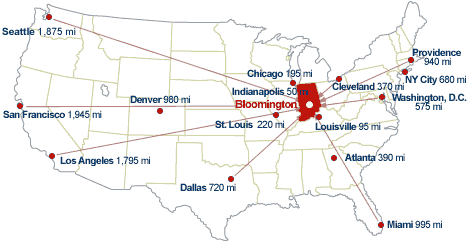
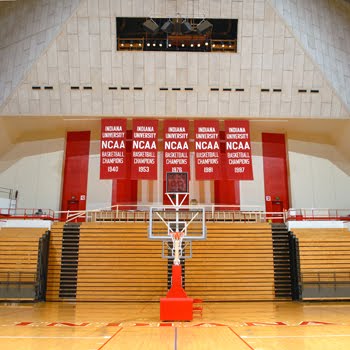


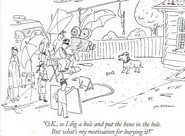





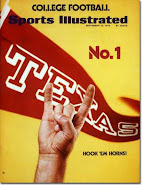
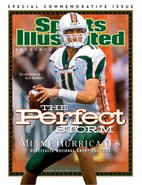
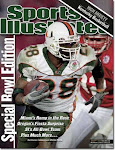
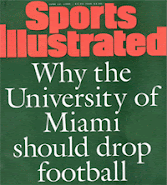
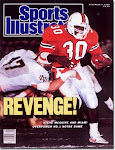
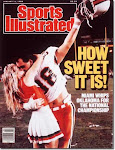
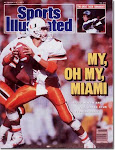

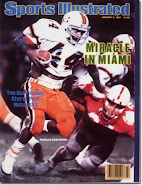
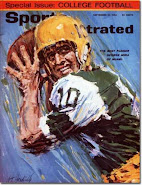
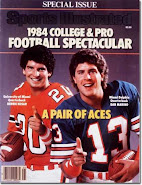

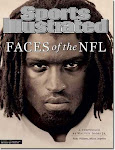
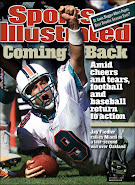
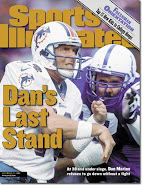
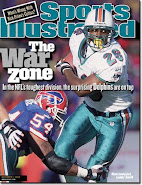
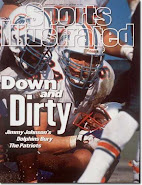


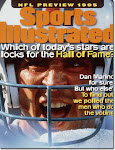
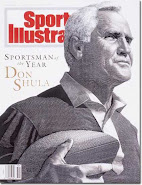
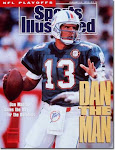
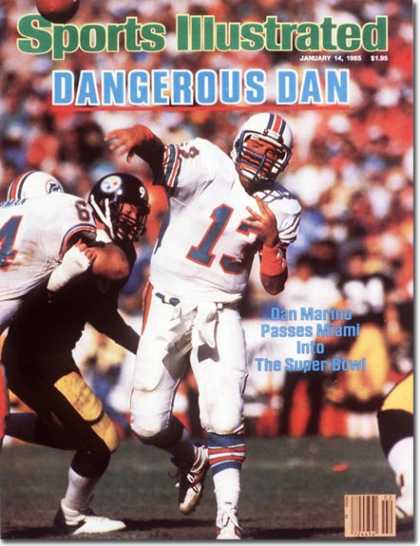

+Sep+10,+1984.jpg)
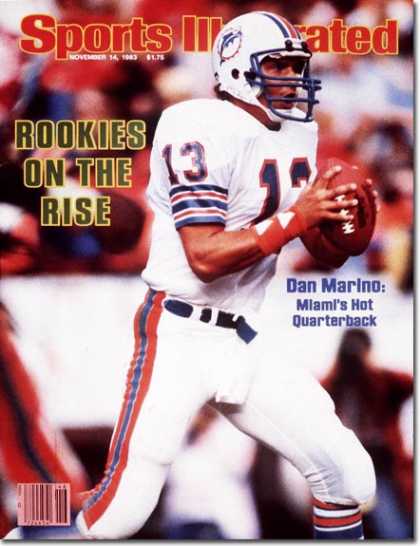
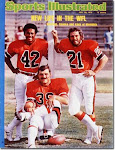
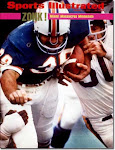

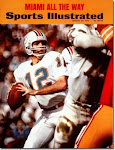
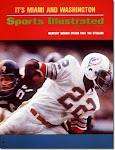

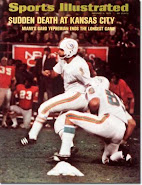


No comments:
Post a Comment